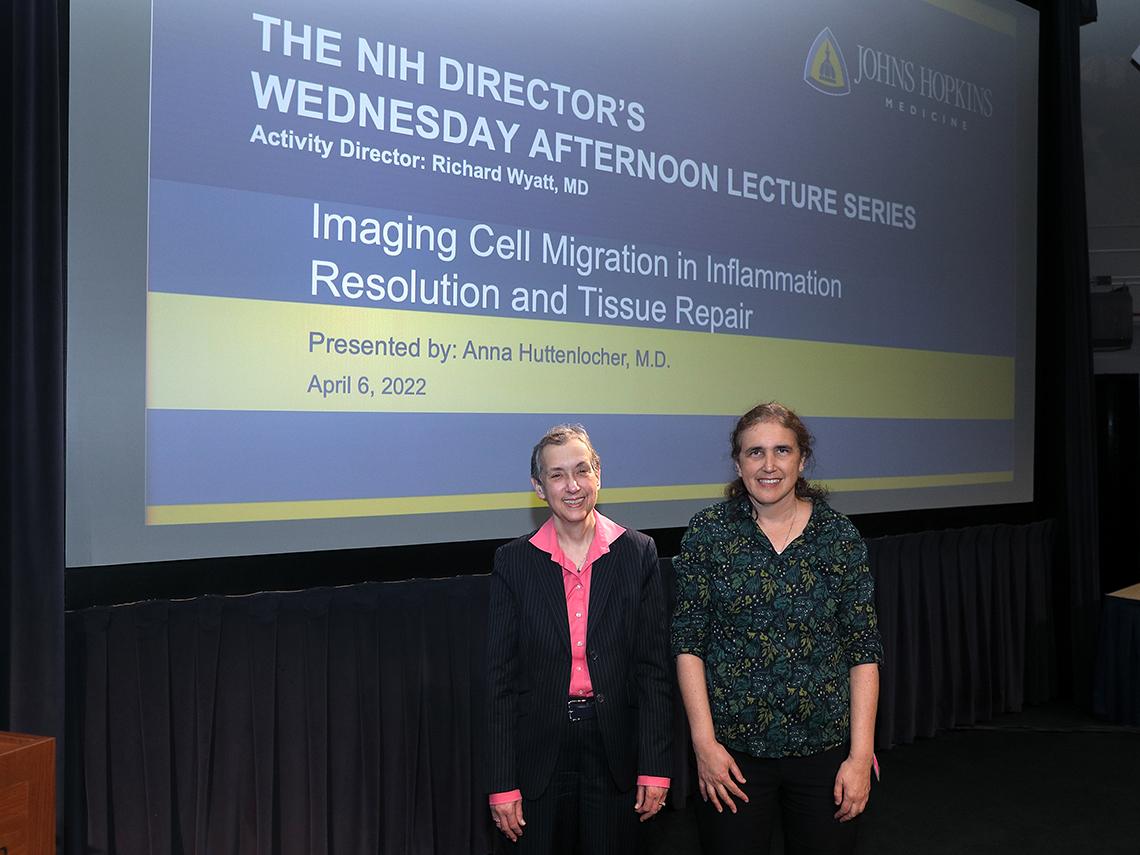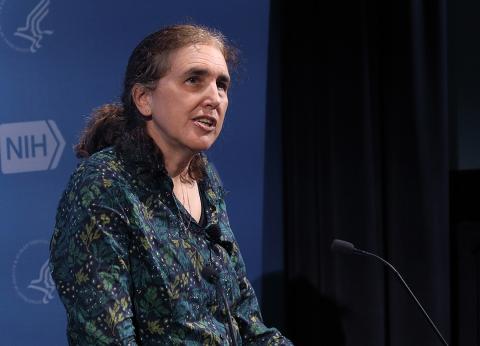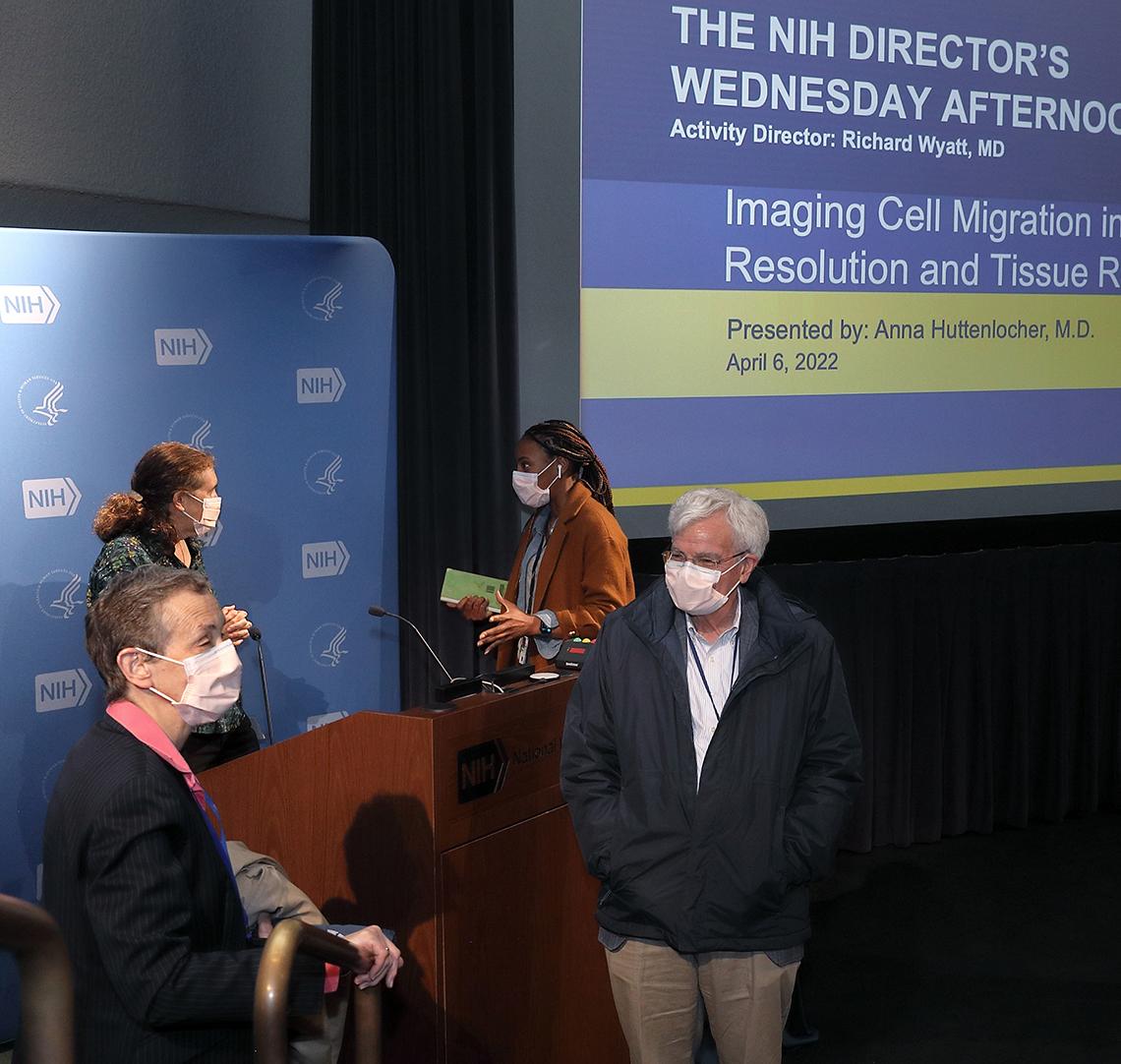Reverse Migration
Insight Into Neutrophil Behavior Yields Clues About Inflammation

Photo: Chia-Chi Charlie Chang
Understanding how a type of white blood cell called a neutrophil behaves at the site of a tissue injury might one day lead to advances in wound repair and inflammation, said Dr. Anna Huttenlocher, at the first in-person NIH Director’s Wednesday Afternoon Lecture in Lipsett Amphitheater since March 2020.
Known as the immune system’s first responders, neutrophils move quickly to sites of tissue damage or infection, said Huttenlocher, a professor of pediatrics and medical microbiology and immunology at the University of Wisconsin-Madison.
Her lab uses zebrafish as a genetic model system to study because they are transparent. Advances in live imaging allow the lab to watch the non-invasive, real-time movement of neutrophils in response to injury or infection. In zebrafish, neutrophils are found in the head and in the caudal hematopoietic tissue, a region near the tail.
“We’re interested in what distinguishes neutrophil response to tissue damage and microbial signals,” she said. “And in particular what signals promote the resolution of neutrophil inflammation.”

Photo: Chia-Chi Charlie Chang
Huttenlocher’s lab discovered that neutrophils leave sites of tissue damage, a process called “reverse migration.” At the time of the finding, “the dogma was that neutrophils go into sites of tissue damage, die and then get cleared by macrophages,” another type of white blood cell that surrounds and kills microorganisms, removes dead cells and stimulates the action of other immune system cells.
New data suggest reverse migration might be involved in systemic inflammation, she said. These findings would have implications for several diseases, including pancreatitis, acute respiratory distress syndrome and cancer.
Understanding what regulates reverse migration is important because there is a balance that must be maintained, Huttenlocher said. Too many neutrophils can cause hyper inflammation while too few cause an immune deficiency, which leads to chronic infection and impaired healing.
A signaling protein called myeloid-derived growth factor (MYDGF) regulates the movement of neutrophils to wounded, but not infected, tissue in zebrafish larvae.
In one study, the tail of a zebrafish with a MYDGF-deficiency was burned. After the injury, scientists observed increased neutrophil activity at the site of the wound. These results suggest the protein limits neutrophil inflammation and promotes reverse migration. The exact mechanism is yet to be completely understood.
Going forward, Huttenlocher hopes to learn more about how neutrophils interact with macrophages at wound sites. In addition, her group is studying how MYDGF affects macrophages.

Photo: Chia-Chi Charlie Chang
Studying neutrophil reverse migration and how inflammation resolves might one day answer key questions about the immune system’s response to infection and sterile injury, she said.
Huttenlocher’s full talk can be viewed at https://videocast.nih.gov/watch=44239.

